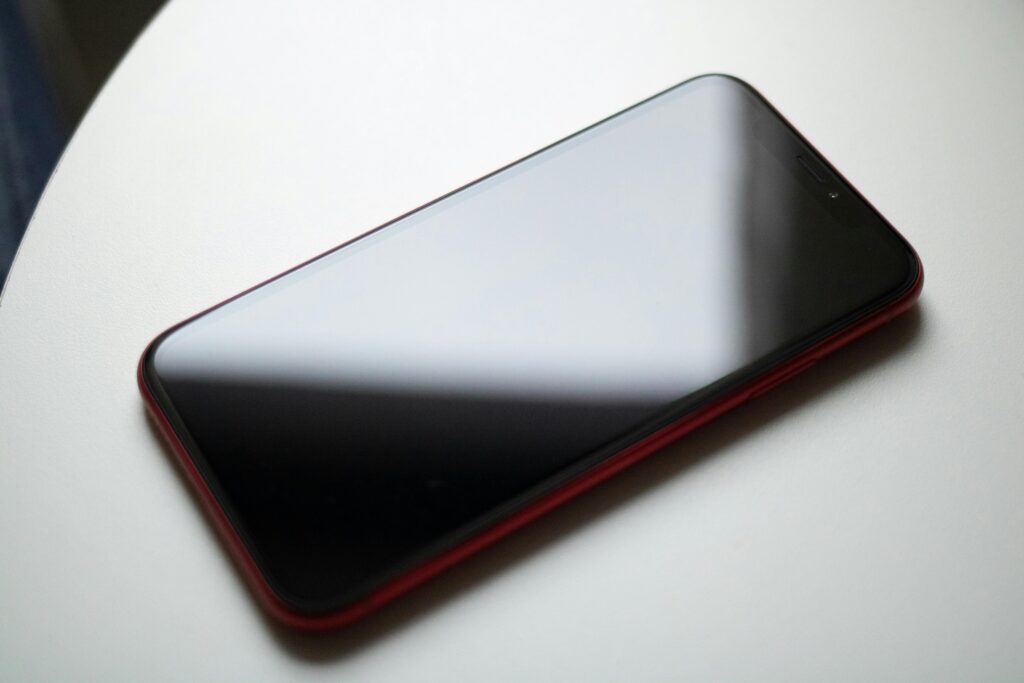When your health and fitness apps don’t talk to each other, it can throw off your entire tracking routine. If you’re using MyFitnessPal with Samsung Health and noticing that steps, workouts, or calorie data aren’t syncing properly, you’re definitely not alone. This is a common issue that can usually be fixed with a few simple adjustments. Whether it’s a permissions glitch, a connection hiccup, or a settings problem, there are a few things worth checking to get things back on track. Let’s go over what might be going wrong and how you can fix it.

Why MyFitnessPal May Not Be Syncing with Samsung Health
There are several reasons why MyFitnessPal might stop syncing with Samsung Health, and most of them come down to app settings or recent updates. One common issue is incomplete permissions if even one data type (like steps or exercise) isn’t granted access during setup, the sync may not work correctly. Another culprit is app updates from either Samsung or MyFitnessPal that quietly reset or break the connection behind the scenes.
Sometimes the apps are simply out of sync due to a stale connection; this can happen after switching phones, reinstalling one of the apps, or using multiple tracking tools at once. Cached data or login issues can also block syncing, especially if MyFitnessPal hasn’t been able to connect to the internet properly. And finally, there are limitations in what data syncs to begin with; some activities just aren’t supported, no matter how the apps are configured.

What Should Sync Between MyFitnessPal and Samsung Health
When the connection is working correctly, MyFitnessPal and Samsung Health can share several types of data. Here’s what’s supposed to sync:
- Steps: If Samsung Health is set as your step source in MyFitnessPal, your daily step count will sync automatically. This is one of the most common sync points people rely on.
- Weight: Weight data syncs in both directions. If you log your weight in Samsung Health, it will appear in MyFitnessPal, and vice versa. However, body fat percentage does not sync.
- Food: Food entries logged in MyFitnessPal, including manually entered meals, sync to Samsung Health when properly connected.
- Exercises: Some cardio workouts sync both ways, but not all. For example, a run logged in Samsung Health usually appears in MyFitnessPal. On the other hand, strength training and bodyweight exercises don’t sync from Samsung Health at all.
Even when everything’s set up right, not all data types are supported equally. That’s why some activities or entries may seem to vanish or never appear across the apps.

Step-by-Step Fix: How to Restore the Connection
If MyFitnessPal has stopped syncing with Samsung Health, follow these steps carefully to reset the connection. This process helps clear out any bugs or permission issues that may have disrupted the sync. Make sure to go through each step in order for the best results.
1. Unlink Samsung Health from MyFitnessPal
- Open the MyFitnessPal app.
- Tap Menu (☰ or “More”) > Apps & Devices.
- Find Samsung Health in the list and tap it.
- Select Disconnect to remove the integration.
Unlinking clears the current (and possibly broken) connection between the two apps.
2. Sync Your Data to Avoid Losing It
Before removing anything, make sure your latest data is safely backed up:
- Open the MyFitnessPal app.
- Scroll down and tap “Sync” (usually at the bottom of the menu).
- Wait until it says the app has synced successfully.
- You can also sign in to www.myfitnesspal.com to confirm your data is saved online.
If your data doesn’t sync and you uninstall the app, anything that wasn’t backed up will be lost.
3. Clear the Cache for MyFitnessPal
On Android:
- Go to Settings > Apps > MyFitnessPal.
- Tap Storage, then Clear Cache (do not clear data).
This helps reset the app’s local memory without affecting your stored account info.
4. Uninstall and Reinstall MyFitnessPal
- Go to Settings > Apps > MyFitnessPal > Uninstall.
- Then open the Google Play Store, search for MyFitnessPal, and reinstall it.
This ensures you’re using the latest version and removes any corrupted files that may be interfering with syncing.
- Important: Make sure you know your username and password before uninstalling so you can log back in.
5. Reconnect Samsung Health to MyFitnessPal
After reinstalling:
- Open the MyFitnessPal app and log in.
- Go to Menu > Apps & Devices.
- Search for Samsung Health and tap Connect.
- When prompted, allow all permissions; this is crucial. (You’ll need to scroll down the pop-up window to see and approve every data type.)
Without full permissions, syncing will either be incomplete or fail entirely.
6. Set Samsung Health as the Step Source (Optional, but Recommended)
If you want Samsung Health to handle your daily step tracking:
- Open MyFitnessPal.
- Go to Menu > Steps.
- Choose Samsung Health as your step source.
This ensures your steps from your phone or Galaxy Watch sync into MyFitnessPal.
7. Trigger a Manual Sync
After reconnecting:
- Stay connected to Wi-Fi or mobile data.
- Open MyFitnessPal and pull down to refresh or tap the Sync option again.
- Wait a few minutes, then check if your data is appearing correctly.
8. Still Not Working? Try Developer Mode in Samsung Health
Some users report that enabling developer mode helps when permissions don’t behave properly:
- Open Samsung Health.
- Go to Settings > About Samsung Health.
- Tap the version number 10 times quickly to enable Developer Mode.
- Go back, try reconnecting to MyFitnessPal, and check the permissions again.
This trick has worked for users after Samsung updates that restricted app permissions unintentionally.
Bonus Fix: Developer Mode Workaround for Samsung Health
If you’ve followed all the steps and MyFitnessPal still isn’t syncing with Samsung Health, there’s one more trick that’s helped other users turning on Developer Mode in Samsung Health. This workaround has been mentioned in forums and community threads and may force the permissions screen to reset, especially after certain Samsung updates.
Here’s how to try it:
- Open the Samsung Health app on your phone.
- Tap the three-dot menu (or gear icon) to go to Settings.
- Scroll down and tap “About Samsung Health.”
- Now tap the version number 10 times in a row this will enable Developer Mode.
- Go back to the main settings screen. Developer options should now be active in the background.
- Return to MyFitnessPal, go to Apps & Devices, and reconnect Samsung Health.
- When prompted, grant all permissions, making sure to scroll and check that every category is allowed.
Users have reported that this process either reactivates hidden permissions or resets internal access controls that were accidentally disabled by a Samsung Health update.
While this workaround isn’t officially documented by Samsung or MyFitnessPal, it has helped many users get syncing working again especially when everything else has failed. It’s safe to try and doesn’t change anything else in the app unless you deliberately adjust developer settings.

When to Reach Out for Help
If you’ve followed all the troubleshooting steps and your apps still aren’t syncing, it might be time to contact support. While many syncing issues can be fixed with a few adjustments, there are occasions when something more technical is at play. Here’s when you should consider reaching out:
- If none of the steps worked, and you’re still unable to sync MyFitnessPal with Samsung Health after reinstalling and resetting permissions.
- If your data hasn’t synced properly after completing all troubleshooting steps.
- If you suspect a recent app or system update might have caused the issue, and nothing seems to resolve it.
You can contact MyFitnessPal support by visiting the Help Center and submitting a request with details about your issue. Be sure to include your device details, the steps you’ve already taken, and any error messages you’ve encountered.

Still Having Issues? Consider a Simpler Alternative – ReciMe
If you’re spending more time fixing tech issues than actually planning your meals, we built ReciMe to offer a simpler and more reliable way to stay on top of your nutrition.
Built for Real-Life Meal Tracking
ReciMe isn’t a traditional calorie counting app but we automatically calculate the calories, protein, carbs, and fats in every recipe you save. So even if you’re not tracking every bite, you’ll still have the key nutritional info you need to make informed choices.
What You Can Do with our app:
- Save recipes from Instagram, TikTok, Pinterest, YouTube, Facebook or notes
- Get automatic nutrition estimates for saved recipes
- Organize everything into personal cookbooks
- Plan your week with our flexible meal planner
- Instantly create smart grocery lists, sorted by aisle or by recipe
Use ReciMe Anywhere
ReciMe is available on iOS, through our web version, and via our Chrome extension for quick recipe saving. We’ve also launched our Android app, allowing users to access all features across devices
Free to Start
You can get started for free – the free version lets you save up to 8 recipes, and you’ll still have full access to features like meal planning, grocery lists, and nutrition tracking. For unlimited recipe saving and added tools, you can upgrade to Premium at any time.
Just try it – you’ll love it:


Conclusion
If MyFitnessPal isn’t syncing with Samsung Health, it can be frustrating, but it’s usually an issue that can be resolved with a few troubleshooting steps. From checking permissions and clearing cache to reinstalling the apps, most syncing issues can be fixed. If none of these solutions work, reaching out to support or trying more advanced fixes like Developer Mode in Samsung Health may be necessary.
By following the right steps, you can ensure that your data syncs smoothly and continues to support your health and fitness goals without unnecessary interruptions.
FAQ
1. Why won’t MyFitnessPal sync with Samsung Health?
Syncing issues usually arise due to missing permissions, app updates, or connectivity problems. Ensuring both apps have the correct permissions and reinstalling them often helps resolve the issue.
2. How can I fix the MyFitnessPal and Samsung Health sync issue?
Follow these steps: unlink Samsung Health from MyFitnessPal, clear the cache, reinstall MyFitnessPal, and ensure that all permissions are granted when reconnecting.
3. What data should sync between MyFitnessPal and Samsung Health?
The key data types that sync include steps, weight, food logs, and some exercises. However, not all activities, such as strength training, will sync between the apps.
4. What if the sync issues aren’t resolved after following the troubleshooting steps?
If your issue persists after troubleshooting, try enabling Developer Mode in Samsung Health to reset the app’s permissions, or contact MyFitnessPal support for further assistance.
5. How do I contact support if nothing works?
If the syncing issue remains unresolved, visit the MyFitnessPal Help Center to submit a support request. Be sure to include details about your issue, your device, and the troubleshooting steps you’ve already taken.
